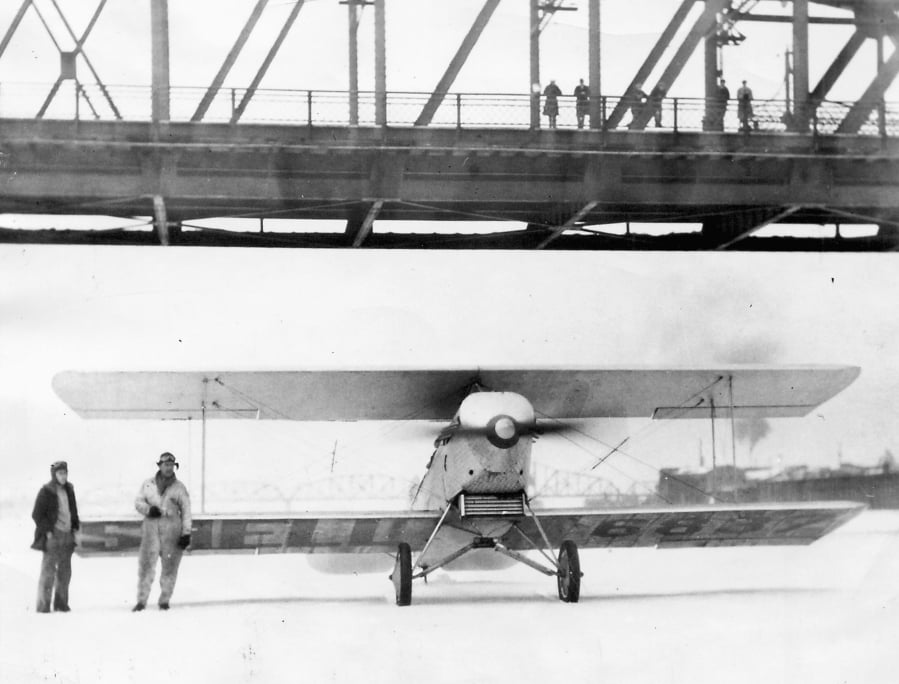The year was 1930, and it was freezing — literally.
The Portland area was coming off a 19-day stretch of sub-freezing temperatures. From Jan. 8 to Jan. 26, the daily high temperature never cleared 32 degrees. It was the longest, most consistent cold spell in the region’s recorded history, according to data from the National Weather Service.
The Columbia River was solid enough to land a plane. That’s a fact, not an expression. On Jan. 31, the moment was immortalized on film — a photograph of Clarence and Glenn Murray standing next to their biplane on the still-frozen river, propeller blurred in motion after the aircraft had glided under the Interstate 5 Bridge and spectators stared from above.
Today, it would be surreal, but at the time a frozen Columbia River wasn’t unheard of. The river actually froze solid a handful of times in the early 20th century.
But it hasn’t frozen since the 1930 cold spell and likely won’t freeze again. There are two primary reasons for that: dams that increase the pace of the waterway and a warming, more temperate climate.
Construction on Bonneville Dam started in 1933, three years after the big Columbia chill. The first phase of the project cost $88.4 million — at the time, it was the largest water impoundment project in the nation — and its turbines churned out an average of 13,000 cubic feet of water per second.
It’s no coincidence that its construction marked the end of the river’s period of freezing. As one of 11 dams on the Columbia River, the Bonneville Dam helps keep the water flowing fast enough to prevent ice from forming.
“At this time of the year, flows in the lower Columbia typically range from 115 kcfs (thousands of cubic feet per second) to 130 kcfs,” Kevin Wingert, public affairs specialist at Bonneville Power Administration, said in an email. “For perspective, that’s about 31 to 39 percent above the long-term, unregulated average flows of 80 kcfs.”
Faster-moving water means it would have to get even colder to freeze the Columbia River. And with sustained freezing temperatures rarer than they were a century ago, the likelihood of that is slim to none.
Middle school chemistry class teaches us that water freezes at 32 degrees, but that’s not true in all cases. Moving water needs to get a lot colder. Moving water in an open system such as a river, with constant inflows of groundwater and a more volatile air temperature affecting the surface, is even harder to freeze.
“You’d need prolonged, sub-freezing temperatures to counteract the temperature difference from the groundwater flows in the river for the water to freeze at the air surface,” Wingert said.
Long periods of subfreezing temperatures just aren’t as common anymore. The Pacific Northwest sees the mercury dip below freezing all the time, but it rarely stays there for more than a couple of days.
Winters are more mild than they used to be. In January 1875, for instance, the average minimum temperature in Portland was 24.6 degrees. A century later, the average minimum temperature in January 1975 was 36.1 degrees.
Last January, the average low was 40.8 degrees.
The warming trend will likely continue. The National Climate Assessment estimates an increase in average annual temperature of 3.3 degrees to 9.7 degrees in the Northwest by 2070 to 2099, depending on the global greenhouse gas output.
So if you’re hoping to stroll to Portland for a night out — like four couples supposedly did in 1917 when they walked across the solid river from Stevenson for a night out dancing in Cascade Locks — you might be out of luck, or you could always take the bridge.




